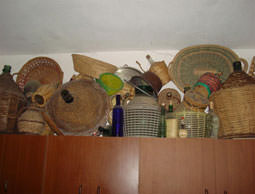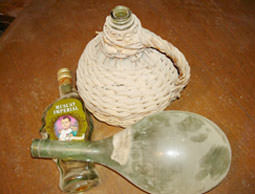|
As a supplement to the 2007 Census of Agriculture, the U.S. Department of Agriculture released the 2008 Organic Production Survey, outlining sales and production practices on organic farms in the United States.
“This was USDA’s first wide-scale survey of organic producers, and it was undertaken in direct response to the growing interest in organics among consumers, farmers, businesses, policymakers and others,” said Agriculture Deputy Secretary Kathleen Merrigan. “The information being released today will be an important building block for future program and policy development.”
The survey was conducted by the National Agricultural Statistics Services, which collected 2008 data from farm operations certified organic by the USDA, transitioning to organic production or exempt from certification because sales were less than $5,000. A total of 14,540 organic farms and ranches across the U.S. participated—10,903 USDA-certified organic and 3,637 exempt from certification.
According to the study, the top state for both numbers of certified-organic farms and organic-product sales is California, with 2,714 organic farms and organic sales reaching 36.3 percent of total sales.
In 2008, organic sales for the participating farms topped out at $3.16 billion, with $1.94 billion in organic crops and $1.22 billion in organic livestock, poultry and their products. While most of organic products were sold at wholesale markets, processors, brokers and retailers, the remaining 6.8 percent went directly to the consumers who purchased from organic farms (2.4 percent), at farmers’ markets (1.9 percent), and through community-supported agriculture (1 percent).
Most farm operators sold their organic products locally: 44 percent within 100 miles of the farm and 30 percent between 100 and 500 miles. National sellers shipping organic products 500 or more miles accounted for 24 percent of those surveyed, while only 2 percent of organic producers sold internationally.
Sales numbers aren’t the only high-dollar figures considered by organic famers—organic production comes at an increased cost to traditional farming practices. In 2008, an organic farm spent an average of $62,000 more on production costs than a traditional farm, according to feedback from the interviewed organic-farm operations. The average organic farm spent $171,978, while the 2007 Census of Agriculture reported a $109,359 average for all farms nationwide. The bulk of the expense for organic farmers went to labor ($569 million) and feed ($480 million), followed by repairs, supplies and expenses; fertilizer, lime and soil conditioners; and rent and lease fees for land, buildings and machinery.
In addition to information on organic sales and expenses, the Organic Production Survey provides information on farm categories, practices and procedures; federal programs; production plans and challenges; and average farm incomes. For more information and to view the full report, visit the USDA Census of Agriculture.













